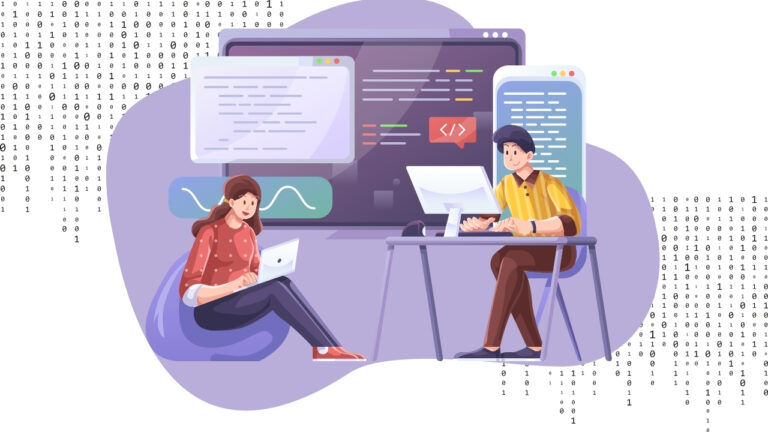ERP software plays a central role in modern business operations by bringing together finance, supply chain, human resources, and customer management into a unified system.
Choosing the right platform can unlock major efficiencies, while a poorly selected solution may create costly setbacks and disruptions.
Decision-makers need a structured approach to evaluate options carefully, considering both the risks and rewards that accompany such an investment.
Table of Contents
ToggleTop 10 ERP Software Selection Criteria
Selecting an ERP solution requires more than a checklist of features.
Decision-makers must assess factors that determine long-term success, financial sustainability, and user adoption.
Business Fit

ERP software should reflect how the organization actually operates.
A solution that closely mirrors current processes reduces the amount of customization required, making implementation smoother and less costly.
Some level of tailoring may still be necessary, but the closer the system aligns with daily workflows, the better the outcome.
Functionality across multiple departments is equally important, as fragmented adoption can quickly lead to inefficiencies and disjointed data.
- Alignment with existing processes
- Minimal need for heavy customization
- Usability across finance, operations, HR, and other areas
Total Cost of Ownership (TCO)
Costs extend far beyond initial licensing fees.
Infrastructure, implementation, training, and ongoing support can significantly influence the total spend over the lifetime of the system.
Calculating return on investment requires an honest look at projected efficiency gains, reduced labor hours, and improved forecasting accuracy.
Financial teams must also evaluate SaaS subscription models against traditional capital investment to see which option best supports long-term affordability.
Industry-Specific Experience
ERP systems perform best when they are designed for the nuances of a particular industry.
Manufacturing businesses, for example, require detailed production planning features, while retailers need strong inventory and customer management tools.
Vendors with proven experience in a specific sector often bring pre-built compliance and reporting modules that address regulatory requirements without extensive customization.
Selecting a vendor with this expertise ensures faster deployment and better operational alignment.
For example, solutions like NonProfit+ are tailored specifically for nonprofit organizations, offering features that address fund accounting, grant management, donor engagement, and regulatory reporting common in the nonprofit sector.
Technology & Integration

Modern businesses rely on a connected ecosystem of software.
An ERP solution must integrate smoothly with CRM systems, warehouse management platforms, and other critical tools.
Mobile access, robust APIs, and cloud readiness ensure that teams can work effectively from anywhere while keeping data centralized and secure.
Cybersecurity cannot be overlooked; compliance with industry standards and strong data protection practices safeguard both company and customer information.
Implementation Strategy
A well-structured implementation strategy often determines success.
Clear project timelines, experienced deployment partners, and proven methodologies help avoid costly delays.
Change management should not be underestimated, as user resistance can derail progress if proper communication and training are lacking.
Adequate internal resources must be allocated to support the rollout, while structured governance ensures accountability and minimizes scope creep.
Vendor Stability & Support
Choosing an ERP is also choosing a long-term partner.
Vendor financial health, market reputation, and client satisfaction are strong indicators of reliability.
Support responsiveness plays a key role in resolving issues before they affect operations.
Looking at a vendor’s product roadmap gives insight into their commitment to continuous improvement and innovation, reducing the risk of working with outdated technology in the future.
Risk Management

ERP projects often face risks that can derail timelines and inflate budgets.
Common challenges include scope creep, inadequate data migration, and resistance from users.
Identifying these risks early and establishing mitigation strategies is crucial for success.
Strong governance, clear communication, and stakeholder alignment reduce the chances of failure and improve overall project outcomes.
Scalability
Business growth requires systems that can expand in capacity and complexity.
A scalable ERP accommodates multiple locations, currencies, and languages without performance issues.
Scalability also ensures that the system remains relevant as operations evolve, avoiding the need for disruptive system replacements in the future.
User Adoption & Training
Technology delivers value only when people use it effectively.
An ERP must provide an intuitive interface that encourages adoption across departments.
Comprehensive training programs, onboarding resources, and internal champions accelerate learning curves.
Support desks and troubleshooting tools help maintain confidence among users, ensuring that the system becomes an integral part of daily operations.
Customization & Extensibility
No single ERP fits every organization perfectly out of the box.
Customization options, particularly low-code or no-code platforms, empower businesses to tailor workflows without heavy IT involvement.
Extensible systems allow safe upgrades even with custom features, preventing costly disruptions when new versions are released.
Workflow automation and module flexibility provide additional layers of adaptability as business processes evolve.
Step-by-Step ERP Selection Process
Selecting the right ERP system requires a structured approach rather than rushing to compare vendors.
Each stage builds on the previous one, helping decision-makers move from internal assessment to external validation and finally to confident adoption.
A methodical process reduces risks, ensures that the investment matches organizational needs, and provides a clear roadmap for success.
Requirements Gathering

Every ERP project begins with clarity on what the business needs.
Without proper groundwork, organizations risk investing in a system that does not solve critical issues.
Documenting workflows, identifying bottlenecks, and capturing inefficiencies ensures that teams know exactly where improvements are needed.
Stakeholder participation is equally important because each department may rely on the system differently.
Key activities include:
- Mapping current business processes and identifying problem areas
- Engaging representatives from finance, operations, HR, supply chain, and customer service
- Using prioritization frameworks like MoSCoW to separate must-haves, should-haves, and nice-to-haves
Such an exercise creates a requirements baseline that will serve as the foundation for every subsequent decision.
Market Research
Once requirements are well documented, the next step is to investigate which vendors can best meet them.
ERP solutions vary widely in deployment model, scalability, and industry specialization.
Businesses need to evaluate not only current functionality but also how the system may evolve as operations expand.
Careful market research prevents wasted time later in the process by eliminating poor fits early on.
Important considerations include:
- Deployment models: SaaS for flexibility, on-premise for control, or hybrid for balance
- Vendor focus: some providers serve large enterprises, while others target small to midsize organizations
- Modularity: ability to add new features or modules without replacing the entire system
- Upgrade pathways: ensuring future versions do not disrupt ongoing processes
Market research at this stage narrows down the list of potential vendors and prepares the organization for formal evaluation.
RFP and Vendor Shortlisting

After identifying potential vendors, organizations must move into formal evaluation.
Developing an RFP (Request for Proposal) ensures vendors respond directly to defined requirements.
Proposals should then be assessed against a structured requirements matrix for objective comparison.
Asking vendors for tailored demonstrations and case studies related to the organization’s industry provides valuable insight into how each system will perform in real-world conditions.
The shortlisting process:
- Draft and distribute an RFP outlining business needs and expectations
- Collect and review responses against the requirements matrix
- Request demos and case studies showing industry-specific success
- Select a manageable number of vendors for final evaluation
Key Evaluation Tools
Structured tools prevent decision-making from becoming subjective.
A requirements matrix aligns vendor features with organizational priorities, making it easy to see which options deliver the strongest fit.
Scorecards allow evaluators to compare vendors consistently, avoiding bias or incomplete assessments.
ROI forecasting adds a financial perspective by weighing expected benefits against costs.
Finally, an ERP selection checklist ensures that no step is skipped, providing a clear path to follow during the evaluation process.
Core tools include:
- Requirements matrix to match vendor capabilities with business priorities
- Vendor scorecards for consistent comparison
- ROI forecast models to project long-term benefits
- ERP selection checklist to maintain accountability throughout the process
These tools collectively give structure, objectivity, and transparency to the evaluation phase.
Final Decision-Making
After thorough evaluation, decision-makers must translate findings into action.
Leadership involvement ensures accountability and alignment with strategic objectives.
Running pilot programs or sandbox environments provides a safe way to test shortlisted solutions under realistic conditions.
Once a final vendor is identified, negotiations begin.
Contract discussions must cover service-level agreements, support commitments, upgrade schedules, and pricing terms.
Clear documentation at this stage helps prevent disputes in the future and ensures that expectations are firmly established on both sides.
Key steps include:
- Involving leadership in reviewing evaluation results
- Running pilot programs to validate performance in practice
- Negotiating contracts with attention to SLAs, escalation procedures, and long-term commitments
Strong decision-making practices at this stage ensure that organizations not only select the right vendor but also secure a partnership designed for long-term success.
Summary
Selecting an ERP system represents a long-term strategic choice rather than a simple purchase.
Success comes through engaging stakeholders, evaluating criteria comprehensively, and aligning the decision with long-term goals.
Businesses that invest effort into careful planning and structured selection processes are more likely to secure a system that grows with them and delivers meaningful value.
Agility remains essential, as an ERP must continually adapt to the evolving needs of the organization.



